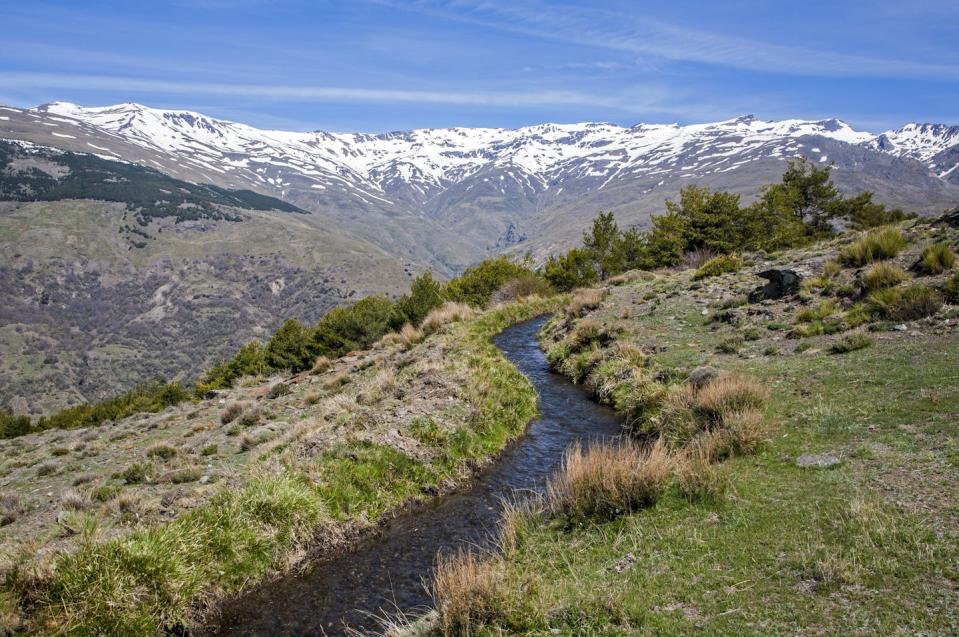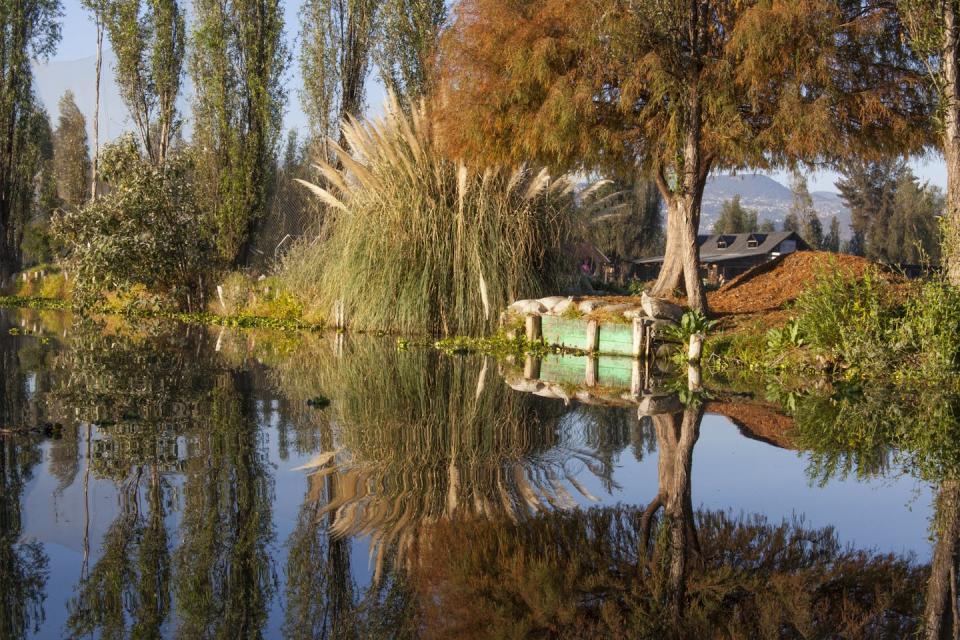In dozens of archaeological discoveries around the world, from the successful reservoirs and canals of Angkor Wat in Cambodia to the abandoned Norse colonies in Greenland, new evidence paints pictures of civilizations struggling with unexpected climate changes and the reality that their farming practices had evolved. unsustainable.
These discoveries also include success stories, where ancient farming practices helped civilizations survive in harsh times.
Zuni farmers in the southwestern United States survived long stretches of very low rainfall between AD 1200 and 1400 by adopting small-scale decentralized irrigation systems. Farmers in Ghana coped with severe droughts from 1450 to 1650 by planting native African grains, such as drought-tolerant pearl millet.
Ancient practices like these are attracting new interest today. As countries face unprecedented heat waves, storms and melting glaciers, some farmers and international development organizations are delving deep into the agricultural archives to revive these ancient solutions.

Medieval Moorish irrigation technology has brought back drought-stricken farmers in Spain. International companies hungry for carbon offsets have paid big money for a biocar made using pre-Columbian Amazonian production techniques. Texas farmers have turned to ancient cover cropping methods to buffer against unpredictable weather patterns.
But understanding ancient technologies and techniques without regard to historical context reveals one of the most important lessons ancient farmers could reveal: Agricultural sustainability is as much about power and sovereignty as soil, water and crops. .
I am an archaeologist who studies agricultural sustainability in the past. Discoveries in recent years show that the human past is full of people who have dealt with climate change in both sustainable and unsustainable ways. Archaeologists are discovering that ancient sustainability was closely tied to politics. However, these dynamics are often forgotten in discussions of sustainability today.
Maya milpa farming: Forest access is essential
In the tropical lowlands of Mexico and Central America, indigenous Maya farmers have been practicing milpa agriculture for thousands of years. Milpa farmers adapted to the drought by gently managing the forest ecology through controlled burning and careful woodland conservation.
Knowledge of milpa farming enabled many rural farmers to cope with climate changes during the Maya Era – two centuries of political disintegration and urban depopulation between AD 800 and 1000. Importantly, political leaders worked Maya later with farmers to maintain this flexibility. Their light-hearted approach is still legible in the artifacts and settlement patterns of post-Fall farming communities and preserved in the flexible tribute schedules of Maya farmers documented by Spanish monks from the 16th century.
In my book, “Rooting in a useless land: Ancient Farmers, Celebrity Chefs, and Environmental Justice in Yucatan,” I trace the deep history of the Maya milpa. Using archaeology, I show how ancient farmers adapted milpa agriculture in response to centuries of drought and political turmoil.
Modern Maya milpa practices began to gain public attention a few years ago as international development organizations partnered with celebrity chefs, such as Noma’s René Redzepi, and embraced the concept.
However, these groups criticized the traditional milpa practice of burning new forest areas as unsustainable. Instead they promoted a “no-burn” version of growing certified organic maize for high-end restaurants. Their no-burn version of milpa relies on fertilizers to grow maize in a fixed location, rather than using controlled fire ecology to manage soil fertility across vast forests.
The result limited the traditional practices used by Maya farmers for centuries. It also sparked a modern political threat to traditional Maya milpa farming: land grabs.
Traditional milpa agriculture requires a lot of forested land, since farmers have to relocate their fields every few years. But that need for forest is at odds with hotel companies, industrial cattle ranches and green energy developers who want cheap land and find the Maya milpa forest management practices ineffective. Burnless milpa eases this conflict by locking maize agriculture into one small space indefinitely, instead of spreading it through the forest over generations. But it also changes tradition.
Milpa Maya farmers are now fighting to practice their ancient agricultural techniques, not because they have forgotten or lost those techniques, but because neocolonial land privatization policies actively undermine farmers’ ability to manage woodlands as their ancestors did .
Milpa farmers are increasingly left to accept a rebranded version of their heritage or give up farming altogether – as many have done.
Mexico’s fragile artificial islands: Threats from development
When I look at the work of other archaeologists investigating ancient agricultural practices, I see these same connections of power and sustainability.
In central Mexico, chinampas are ancient systems of artificial islands and canals. They have enabled farmers to grow food in wetlands for centuries.
The continued existence of chinampas is a legacy of deep ecological knowledge and a resource that enables communities to feed themselves.


But archeology has revealed that generations of sustainable chinampa management could be undone almost overnight. That happened when the Aztec Empire decided to re-engineer the expansion of Lake Xaltocan for salt production in the 14th century and its chinampas could not be used.
Today, the future of chinampa agriculture rests on a pocket of protected fields overseen by local farmers on the marshy fringes of Mexico City. These areas are now under threat as demand for housing pushes informal settlements into the chinampa zone.
The highlands of the Andes: A story of labor exploitation
Traditional Andean agriculture in South America incorporates a diverse range of ancient cultivation techniques. One in particular has a complicated history of attracting revival efforts.
In the 1980s, government agencies, archaeologists and development organizations spent a fortune trying to convince Andean farmers to revive raised field farming. Ancient raised fields have been found around Lake Titicaca, on the border between Peru and Bolivia. These groups became convinced that this remnant technology could curb hunger in the Andes by enabling back-to-back potato harvests without the need for fallow.
But the farmers of the Andes had nothing to do with the labor-intensive raised fields. The practice was abandoned even before the rise of the Inca civilization in the 13th century. The attempt to revive ancient raised field agriculture failed.
Since then, more archaeological discoveries around Lake Titicaca have revealed that ancient farmers were forced to work the upland fields by the Chinese Tiwanaku Empire during its peak between AD 500 and 1100. Far from the politically neutral narrative put forward by organizations developed, the raised areas were not there to help farmers feed themselves. They were a technology to exploit labor and harvest surplus crops from the ancient farmers of the Andes.
Appreciate the history of ancient practices
Reclaiming ancestral farming techniques can be a step towards sustainable food systems, especially when descendant communities lead their reclamation. The world can, and I think should, reach back to recover agricultural practices from our collective past.
But we cannot pretend that these practices are apolitical.
The Mayan milpa farmers who continue to practice controlled burning against land expropriators understand the value of ancient techniques and the threat of political power. Mexican chinampa farmers, therefore, work to bring local food back to disenfranchised urban communities. And so are Andean farmers who refuse to participate in single-explosive elevated field rehabilitation projects.
Depending on how they are used, ancient agricultural practices can reinforce social inequality or create more equitable food systems. Ancient practices are not inherently good – a deeper commitment to fair and equitable food systems is needed to make them sustainable.
This article is republished from The Conversation, a non-profit, independent news organization that brings you reliable facts and analysis to help you make sense of our complex world. Written by: Chelsea Fisher, University of South Carolina
Read more:
Chelsea Fisher has received research funding from the National Science Foundation, the Wenner-Gren Foundation, and the Fulbright-Hays Program.